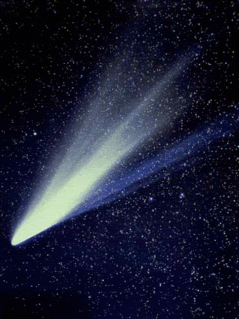This week, scientists in charge of the program released the first tantalizing glimpse of the dust Stardust managed to collect. The particles have quickly become a must for anyone studying the origins of comets and those wondering what goes on at the frozen edges of our solar system where comets are thought to develop.The findings are not quite what scientists expected. "The interesting thing is," says Donald Brownlee of the University of Washington, the lead scientist on the Stardust mission, "we are finding these high-temperature minerals in materials from the coldest place in the solar system.... Remarkably enough we have found fire and ice."
Stardust returned to Earth on January 15 this year following a seven-year mission which saw the spacecraft orbit the sun three times to collect the interstellar and comet dust. The particles -- the first extraterrestrial material brought to Earth since the manned moon mission -- were collected by a special silicone-based material called aerogel. It's a clear substance that is 99.9 percent air but looks and feels like glass reborn as Styrofoam. The particles left dozens of tracks in the aerogel as they were captured and the streaks can now be seen with the naked eye. Scientists spent hours removing the particles with a computer-controlled needle.

2 comments:
But was the Andromeda Strain in the gel?
I loved that project, and the one where we slammed a chunk of copper into an asteroid to figure out what it was made of from Spectrographic analysis. Cool.
I love stories like this. Besides reminding us to get a realistic perspective of life on earth, it is so exciting to see science advance to places so recently unimaginable.
Post a Comment